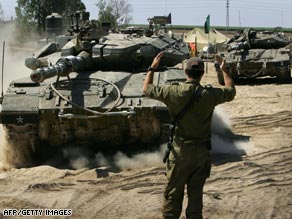(NSI News Source Info) December 24, 2008: For months the Iraqi government (including the Kurdish regional government in northern Iraq) have been promising Turkey that they would help stop PKK attacks on Turkey from Iraqi territory. Turkey has also wanted the Iraqis to do more than that?to include arresting senior PKK commanders. On this request, the Iraqis hesitate.
(including the Kurdish regional government in northern Iraq) have been promising Turkey that they would help stop PKK attacks on Turkey from Iraqi territory. Turkey has also wanted the Iraqis to do more than that?to include arresting senior PKK commanders. On this request, the Iraqis hesitate.
 (including the Kurdish regional government in northern Iraq) have been promising Turkey that they would help stop PKK attacks on Turkey from Iraqi territory. Turkey has also wanted the Iraqis to do more than that?to include arresting senior PKK commanders. On this request, the Iraqis hesitate.
(including the Kurdish regional government in northern Iraq) have been promising Turkey that they would help stop PKK attacks on Turkey from Iraqi territory. Turkey has also wanted the Iraqis to do more than that?to include arresting senior PKK commanders. On this request, the Iraqis hesitate. However, PKK commanders knowing that Iraqi assistance in stopping attacks into Turkey would likely mean shutting down PKK bases inside Iraq, and that would go a long way to totally destroying the organization. Now Turkey and Iraq are talking about a "three phase plan" to deal with the PKK.
The very fact they are discussing it and leaking it to the media sends a dire political signal to the PKK. Phase one is to increase the PKK's political isolation by having Iraq label the PKK as an "illegal organization" that is a political liability and a physical threat to both Turkish and Iraqi Kurds. Phase Two amounts to an Iraqi Kurd political appeal to the PKK to surrender.
If the PKK refuses the deal, Iraq and Turkey, backed by the US, would go after the PKK?in other words, the military solution. There are several flavors of military solution, however, some of which may have more appeal to Iraqi Kurds than the other. The Turks would attack the bases while Iraqi and US forces (and perhaps Turkish) cordon off escape routes to the south and east.
December 18, 2008: Turkey said that it would try nine people who were arrested after the July 2008 bombs attacks in Istanbul that killed 17 people and wounded over 150 others. A Turkish prosecutor said all nine were members of the PKK.
December 16, 2008: Turkish Air Force fighter-bombers struck several suspected PKK bases in northern Iraq. The Iraqi government reported heavy attacks on the town of Chuman.
December 14, 2008: Two PKK rebels surrendered to Turkish security forces in Hakkari province. The two men said they had been in a PKK base in northern Iraq near the town of Zap.
December 11, 2008: The Turkish government said that the PKK attack on October 3 on the Aktutun Gendarmerie Border post (near Semdinli in Hakkari province) had galvanized support throughout Turkey for intensifying the war against the PKK. 17 Turkish soldiers died in the battle. That attack has also spurred increased Turkish efforts to internationally isolate the PKK. Turkey has been trying for years to get the EU to crack down on PKK financial sources in Europe.
December 8, 2008: The PKK declared a nine day long ceasefire to honor the Eid al-Adha (Feast of the Sacrifice).
December 7, 2008: Turkish soldiers and police killed two PKK rebels in a firefight in Sirnak province. They also found a weapons and ammunition cache.
December 5, 2008: The Iraqi government said that in a recent "tri-lateral" meeting involving Turkey and the US, it had agreed to form a joint committee to "track the threat represented by the PKK…" The Iraqi statement called the PKK a threat both to Iraq and Turkey. This follows a statement by Iraqi Prime Minister Nouri al-Maliki that agreements with Turkey had laid down "the rules to confront the terrorist PKK." These are words Turkey wants to hear from Iraq. Turkey is insisting that Iraq's regional Kurdish government also identify the PKK as a terrorist organization. That would be a major diplomatic success for Turkey.







 The upgraded aircraft is expected to be operated by the Russian air force as well as foreign air forces currently operating the Su-25SM. Ulan-Ude Aviation and the Russian ministry of trade have recently discussed the possible establishment of serial production of modernized 1980s vintage Su-25UBM trainers and Su-25TM ground attack aircrafts
The upgraded aircraft is expected to be operated by the Russian air force as well as foreign air forces currently operating the Su-25SM. Ulan-Ude Aviation and the Russian ministry of trade have recently discussed the possible establishment of serial production of modernized 1980s vintage Su-25UBM trainers and Su-25TM ground attack aircrafts




 "If the United States continues to bring elements of its strategic forces closer to Russia’s borders, including missile-defense sites in Poland and the Czech Republic, which are aimed at the reduction of our nuclear deterrent, mobile Topol complexes could be placed in Belarus," the source told Interfax news agency.
A defence ministry spokesman contacted by AFP declined to comment on the report.
Russia has reacted angrily to U.S. plans to place elements of a missile shield in Poland and the Czech Republic, threatening counter-measures including the deployment of Iskander short-range missiles in its western Kaliningrad region.
The United States says its missile shield is not a threat to Russia and is instead meant to protect against "rogue states" like Iran.
The report came one day after Belarussian President Alexander Lukashenko met his Russian counterpart Dmitry Medvedev in Moscow and reached a deal on the deliveries of Russian gas to Belarus.
"If the United States continues to bring elements of its strategic forces closer to Russia’s borders, including missile-defense sites in Poland and the Czech Republic, which are aimed at the reduction of our nuclear deterrent, mobile Topol complexes could be placed in Belarus," the source told Interfax news agency.
A defence ministry spokesman contacted by AFP declined to comment on the report.
Russia has reacted angrily to U.S. plans to place elements of a missile shield in Poland and the Czech Republic, threatening counter-measures including the deployment of Iskander short-range missiles in its western Kaliningrad region.
The United States says its missile shield is not a threat to Russia and is instead meant to protect against "rogue states" like Iran.
The report came one day after Belarussian President Alexander Lukashenko met his Russian counterpart Dmitry Medvedev in Moscow and reached a deal on the deliveries of Russian gas to Belarus.

















